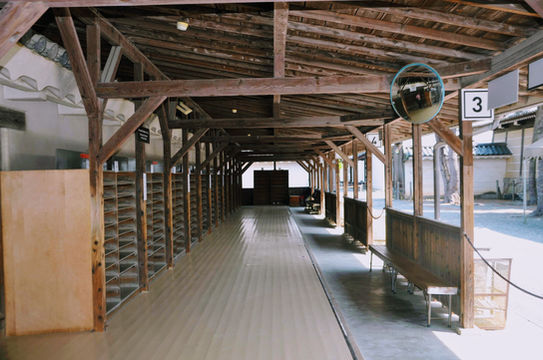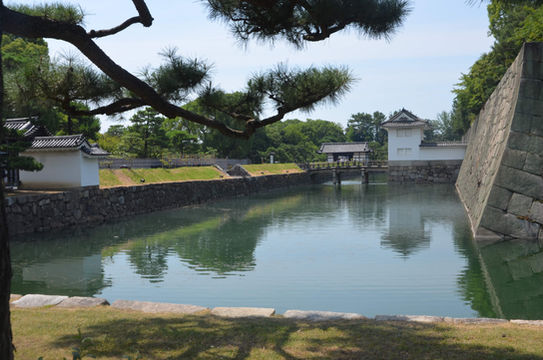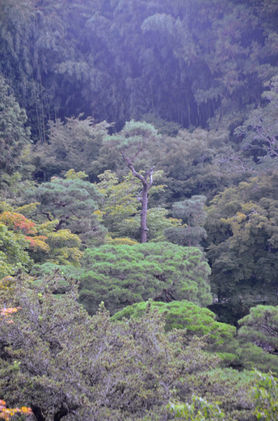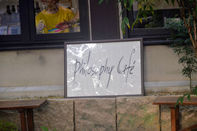
Japan 3
Private Airbnb - Kyoto Guest House - Historic
Nijo Castle
Tenryuji Temple
Ryoanji Temple
Kinkakuji Temple
Ginkakuji Temple
Philosopher's Walk
Hotel New Grand Yokohama
Princess Cruise -
Ishinomaki - canceled due to Typhoon
Hakodate - Morning Market (Fish market, including Minke Whale)
Day 5-6 Kyoto

Nijo-jo Castle
The gorgeous style of this castle was intended as a demonstration of Shogun Tokugawa Ieyasu (1542-1616)'s prestige.
Nijo-jo Castle was the residence of the Tokugawa shoguns in Kyoto, who had been ruling Japan for over 260 years from 1603 to 1868, and it remains an eloquent testimony to their power. The wide moat, massive stone walls, and heavy yet elaborate gates are still impressive, and were the only fortifications the inhabitants felt necessary, so firm was their grip on power. The grounds are large and contain several lovely gardens as well as groves of plum and cherry trees. The palace building itself is imposing, yet upon closer examination, is rich in decorative detail.
Inside the palace are several masterpieces of Japanese art, most notably the painted screens of the main chamber. In this room the shoguns met the daimyo (high-ranking warlord-administrators) who sought an audience. The screens were painted by artists of the Kano school and employ rich colors and large amounts of gilt to depict flowers, trees, birds and tigers. They were meant to impress. Also in the palace are the famous "nightingale floors," which were designed to squeak when stepped on and thus alert guards to any intruders.
Tenryū-ji (天龍寺)—more formally known as Tenryū Shiseizen-ji (天龍資聖禅寺)—is the head temple of the Tenryū branch of Rinzai Zen Buddhism, located in Susukinobaba-chō, Ukyō Ward, Kyoto, Japan. The temple was founded by Ashikaga Takauji in 1339, primarily to venerate Gautama Buddha, and its first chief priest was Musō Soseki. Construction was completed in 1345. As a temple related to both the Ashikaga family and Emperor Go-Daigo, the temple is held in high esteem, and is ranked number one among Kyoto's so-called Five Mountains. In 1994, it was registered as a UNESCO World Heritage Site, as part of the "Historic Monuments of Ancient Kyoto".
Ryoan-ji Temple is famous for its mysterious rock garden, the most celebrated in Japan, which defies attempts at explanation.
Enclosed by an earthen wall, fifteen carefully placed rocks seem to drift in a sea of raked white gravel. A viewing platform right above the garden gives visitors an unimpeded view, although from whatever angle you view the garden, you can never see all fifteen stones.


Kinkakuji (金閣寺, Golden Pavilion) is a Zen temple in northern Kyoto whose top two floors are completely covered in gold leaf. Formally known as Rokuonji, the temple was the retirement villa of the shogun Ashikaga Yoshimitsu, and according to his will it became a Zen temple of the Rinzai sect after his death in 1408.
Ginkakuji (銀閣寺, Silver Pavilion) is a Zen temple along Kyoto's eastern mountains (Higashiyama). In 1482, shogun Ashikaga Yoshimasa built his retirement villa on the grounds of today's temple, modeling it after Kinkakuji (Golden Pavilion), his grandfather's retirement villa at the base of Kyoto's northern mountains (Kitayama). The villa was converted into a Zen temple after Yoshimasa's death in 1490.
As the retirement villa of an art obsessed shogun, Ginkakuji became a center of contemporary culture, known as the Higashiyama Culture in contrast to the Kitayama Culture of his grandfather's times. Unlike the Kitayama Culture, which remained limited to the aristocratic circles of Kyoto, the Higashiyama Culture had a broad impact on the entire country. The arts developed and refined during the time include the tea ceremony, flower arrangement, noh theater, poetry, garden design and architecture.
Despite its name, the Silver Pavilion was never covered in silver. Instead, it is believed that the name arose as a nickname more than a century after the building's construction to contrast it with the Golden Pavilion. Alternatively, it is explained that moon light reflecting on the building's dark exterior (which used to be covered in black lacquer in the past) gave it a silvery appearance.
Next along the route is an expansive, meticulously maintained dry sand garden, known as the "Sea of Silver Sand", with a massive sand cone named "Moon Viewing Platform". Besides the garden stands the Hondo (main hall), which displays paintings on its sliding doors (fusuma) but cannot be entered.

The Philosopher's Walk (哲学の道 Tetsugaku-no-michi, lit. Path of Philosophy) is a pedestrian path that follows a cherry-tree-lined canal in Kyoto, between Ginkaku-jiand Nanzen-ji. The route is so-named because the influential 20th-century Japanese philosopher and Kyoto University professor Nishida Kitaro is thought to have used it for daily meditation. It passes a number of temples and shrines such as Hōnen-in, Ōtoyo Shrine, and Eikan-dō Zenrin-ji. It takes about 30 minutes to complete the walk, although many people spend more time visiting the sights along the way. https://en.wikipedia.org/wiki/Philosopher%27s_Walk

Hotel New Grand Yokohama
Princess Cruise -
Hakodate - Morning Market (Fish market, including Minke Whale)
Aomori - Nebuta Festival
"Nebuta" refers to the float of a brave warrior-figure which is carried through the center of the city, while dancers wearing a unique type of costume called haneto (ハネト) dance around in time with the chant Rasserā (ラッセラー) (shorten dialectal version of "irasshai", calling visitors and customers to watch or join). https://en.wikipedia.org/wiki/Aomori_Nebuta_Matsuri































































































































































